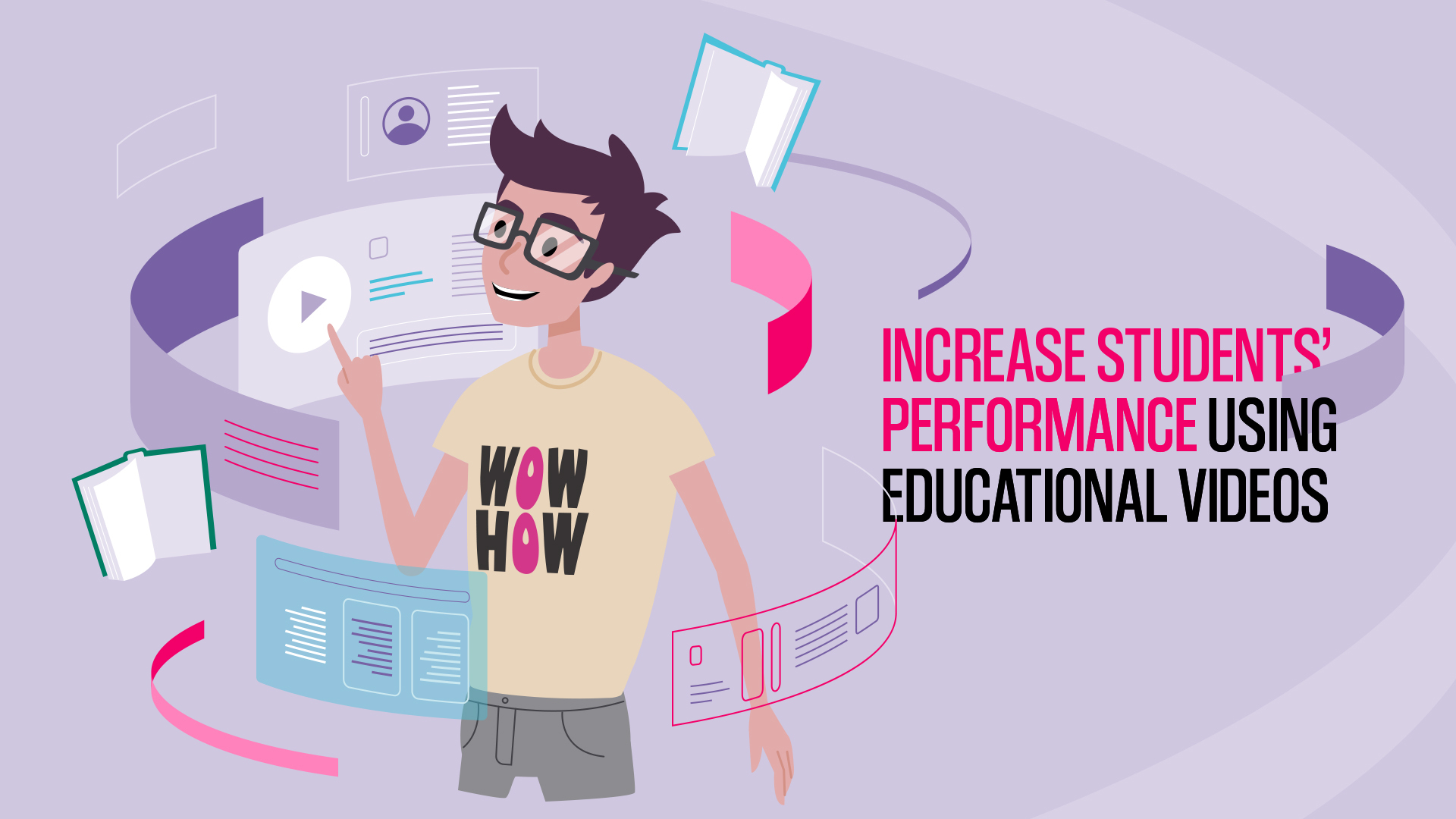


Author: Bob Aug 05, 2022 6 min read
Top-quality educational videos help 83% of teachers enhance students’ experience and convey information effectively. Whether you want to motivate your audience to study numerical analysis or need to tell them about Ancient Greek tragedies, interactive visual content can increase engagement and information retention.
In this article, you will learn about the most significant benefits and challenges of videos in teaching, the best ways of using them in a classroom, and workable tips to create inspiring visual content.
There are countless advantages of using videos during the educational process. Teachers can ensure maximum flexibility for students, as they can stop and replay videos as many times as needed, making it easier to remember the information provided.
Here are a few more reasons to use a video format in a classroom:
As children grow up with smartphones in their hands, technology in education isn’t an option but a necessity now. Using videos to present understandable data or offer an interactive quiz, teachers enable students to succeed in the environment they are familiar with.
Combining educational videos with textbooks and other materials, teachers can create a visual context to help students improve their understanding of a place, person, or event they are reading about. Thus, teachers can contextualize any academic topic, from social relationships in Medieval Europe to linear equations and graphs.
Rather than simply lecturing viewers, visual content enables them to stay focused and engaged. It’s crucial to equip your videos with guiding questions, as it helps students learn actively and remember information better. They can also pause, rewind, and replay video content anytime to boost knowledge retention.
Besides undeniable advantages for both students and teachers, educational videos have several challenges you may face while using them in a classroom.
You require resources to hire a video production team to create a script and a storyboard for your video and choose a suitable animation style, length, and sound effects to satisfy your needs. We recommend you invest in a dedicated team with professional equipment and editing tools to make your content gripping and engaging for students.
For interactive video-based classes, you require a projector or a laptop. With unexpected hardware issues and power outages, teachers are forced to suspend their lessons or use alternative educational methods to continue teaching their students.
Tutors can use various educational videos to motivate their students and convey their message. Take a look at some ways to make your classroom a creative and positive learning space:
Now that you understand that using videos in a classroom can enhance the learning experience and make information more understandable, it’s time to dive deep into the production process and find out how to create inspiring content for students.
Here are some tips for creating motivational videos for students’ success:
Don’t overload learners with lots of new information and unstructured data. To capture viewers’ attention, limit your video length to 6-9 minutes. If you need to include more details, divide your material into several bite-sized sections. You can give students short breaks by equipping your video with engaging quizzes or questions for group discussion.
Viewers have to see their teacher’s personality behind educational videos to stay motivated and involved. Share your enthusiasm with students to make them excited to learn new material. Use a conversational tone, create a personal connection using storytelling or narrative methods, and don’t forget to smile. It’s crucial for learners to feel safe and know that their tutor is still here for them.
To make the most of a video format, your content should be easily digestible and engaging. If you need to explain many complex concepts, break the topic into several smaller parts. Choose one key point for each video, avoid irrelevant information, and offer students real-life examples. You can also mix visual content with other methods like class projects or debates.
Creating unique videos for all of your classes is expensive and time-consuming, so make sure your content is appropriate for ongoing reuse. It’s better to come up with a set of universal videos for various courses and equip them with interactive elements like clickable buttons leading to guiding questions, virtual trivia, or word association games.
Try to reduce cognitive load and convey your message through compelling visuals. But still, if you can’t express your idea with imagery clearly enough, add on-screen text when needed. You can also provide captions or text versions of your content for non-native speakers or learners with hearing impairments.
Are you ready to motivate students with engaging educational videos and convey your message more effectively? If you need to explain complex concepts to the audience or create a self-introduction video, Wow-How Studio is here to help! Reach out to us to discuss your idea and make inspiring visual content tailored to your goals.